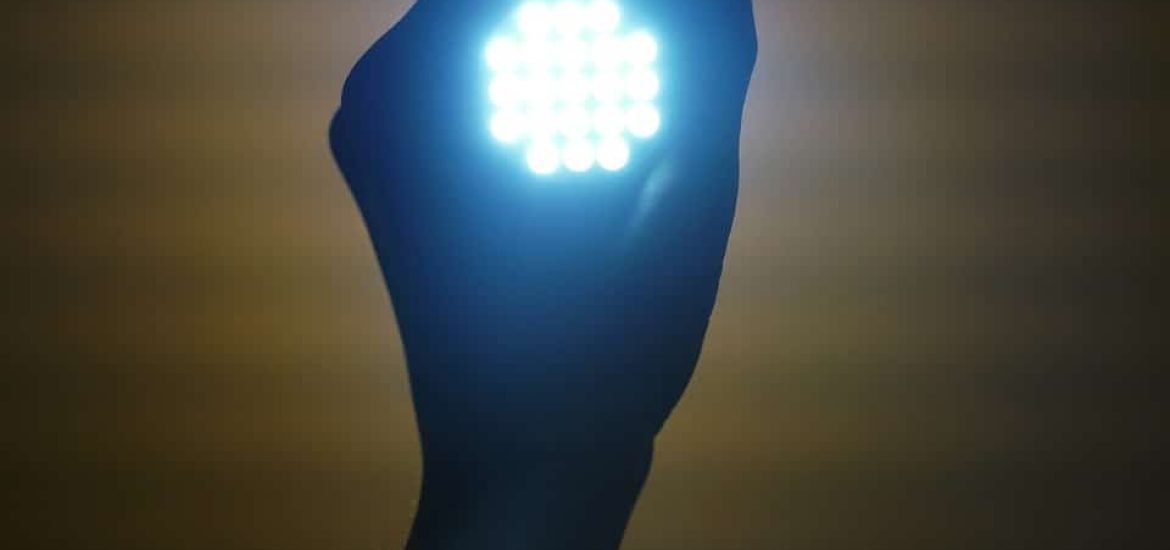
Blue light corresponds approximately to the 400 nm to 480 nm range of the visible spectrum. High doses of blue light on the retina can exceed the eye’s capacity for natural protection and repair mechanisms against Reactive Oxygen Species, which can destroy the membranes of retina cells by lipid peroxidation. This damage is called Ham’s class damage. There are widely accepted exposure limit values and the risk associated with exposure to high dose of blue light from artificial lighting is managed by a well-established regulatory environment [1]. However, considering the widespread use of LED technology, which can produce blue-enhanced light, some authors [2,3,4] recently expressed concerns about the lack of evaluation of the potential health effects of chronic exposure to blue light from LEDs at domestic light levels: they concluded, based on experiments carried out on rodents, that exposure limit values for humans ought to be revised. The publication of these results was followed by widespread media exposure in leading French sites (QueChoisir, Le Parisien) about the danger of LEDs and consumers began to express anxiety. Nevertheless, external validity of these experiments, ie the possibility of transposing results from rodents to humans, must be discussed. At least two potential biases can be pointed out:
Firstly, rodents were used as a model for studying LED-induced retinal oxydative stress. However, this model is not highly relevant when trying to extrapolate the results to the human retina: indeed, the rhodopsin-rich rodent retina is vulnerable to Noell’s class damage, appearing on visual receptors after long exposure under low illumination. Once the retinal lesions have appeared, etiology is hard to deduce from histological observations and it is difficult to conclude how and where damage was initiated. It cannot be excluded that the damage observed on rodents under LED illumination is not Ham’s class damage but Noell ‘s class damage, which is not observed in humans but is typical of small nocturnal animals.
Secondly, from a biometrical point of view, the human eye model and the rodent eye model are different. In a recent article published in Radioprotection [5], we emphasised the fundamental differences between rodent and human eye models and converted some retinal exposures found to be dangerous for rodents into corresponding source radiances for the human eye. We found that not taking into account such biometric differences as pupil sizes and focal lengths between the rodent eye model and the human eye model can lead to an overestimation of the risk to humans, that domestic light levels can be dangerous for rodents but not for humans, and that there is no evidence today that exposure limit values for LED lighting should be decreased. Our opinion is shared by SCHEER experts who, in a preliminary report issued on 6th of July 2017, deduced from the available literature that there is no evidence of deleterious effects of LEDs on the general population in normal use.
This discrepancy between experts illustrates that time for scientific debate should precede media exposure. No study should be taken in isolation and released widely to the media, because it introduces confusion between provisional results and results validated by expertise and consensus.
[1] IEC/EN 62471, Photobiological Safety of Lamps and Lamp Systems.
[2] I. Jaadane et al., Retinal damage induced by commercial light emitting diodes (LEDs), free radical biology and medicine, 84 (2015) 373-384.
[3] A. Krigel et al. 2016. Light-induced retinal damage using different light sources, protocols and rat strains reveals LED phototoxicity, Neuroscience 339: 296–307.
[4] I. Jaadane et al, Effects of white light-emitting diode (LED) exposure on retinal pigment epithelium in vivo, J.Cell Mol.Med. DOI:10.1111/jcmm.13255, 2017.
[5] S. Point and J. Lambrozo (2017) Some evidences that white LEDs are toxic for human at domestic radiance? Radioprotection, 52(4), 297-299.
This post is also available in: FR (FR)